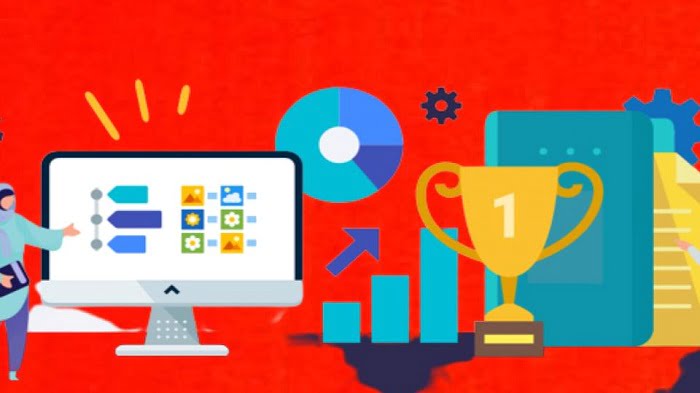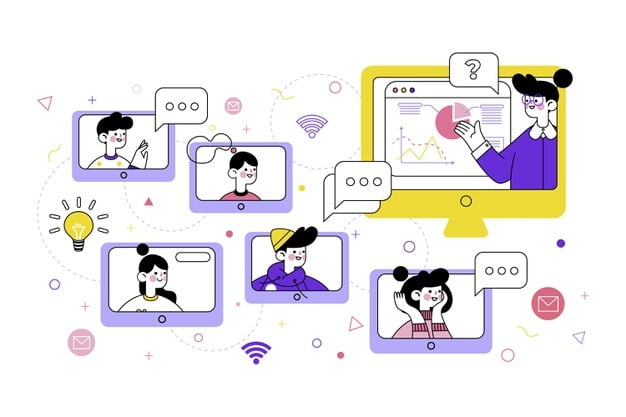8 Practical Tips for Building Role-Specific Employee Training

Employees today desire improved training experiences. Customization is among the top demands. Younger talent is looking for chances to advance their careers and add to their skill set. They are looking for more than the standard orientation and introduction that most new hires receive.
Creating employee training that is specialized for each function is one method to make this happen. This comprises learning routes or curricula that are adapted to the requirements of a work.
It’s an effective technique to guarantee that every employee in that position has the same degree of knowledge. Additionally, it helps staff members understand the steps necessary to transition into a new position.
Employees will feel more motivated if they can advance in their existing position or develop their talents while in it. With a more solid sense of purpose, they will be more capable and self-assured.
“Research has identified relationships between purpose and profitability, engagement, and loyalty,” the Harvard Business Review reported.
A strong training regimen is essential to that formula. You will achieve better overall results if you provide employees with the resources they require to accomplish their objectives and develop into the professionals they desire.
Making ensuring you have sufficient training for all job roles inside your organization is the first step. How can a strong training program be developed for each position?
1. Distribute, Track, and Manage Role Training Using an Effective LMS
Your role training programs will be significantly improved by finding a decent LMS. It will be possible to save, distribute, and track classes on the ideal platform.
To read LMS evaluations and discover more about the eLearning sector, go to LMS.org.
Look for a solution that enables you to divide your team up into groups with separate access to courses and permissions.
This will make it much simpler to get the people who need to take your work role-specific courses in front of them.
Reviews of LMSs can direct you to the best platform or assist you in determining whether it’s time to switch. Most platforms increase their list of features yearly.
Maintaining awareness of new advances can help you keep up with what’s going on so that your training program doesn’t lag.
2. Inquire of Staff About Their Responsibilities And Get Input For Future Training
Asking employees what they need is a smart way to determine how to customize staff development and training.
Find out more about the expertise and information that each role’s employees utilize on a daily basis by meeting with them. Request their opinions on the current training.
If you want to develop the finest training program possible, it’s critical to be receptive to comments and recommendations. The ideal people to pinpoint areas for improvement in your job role-specific courses are your subject matter experts and high performers.
3. Maintain the Accuracy and Relevance of all Training Materials
Ensure that all training materials are correct and appropriate for the task. Anything that goes beyond that should be eliminated.
The majority of businesses offer onboarding training that goes over the fundamentals of being an employee. Training for a particular career shouldn’t include this information.
Instead, job role training should concentrate only on that role.
Additionally, confirm that all work role training is current. Best practices and procedures can alter. The most recent material should be included in your training program.
This is crucial if the position calls for certifications and compliance.
4. Establish a Mentoring Program to Assist Learners in Achieving Training Objectives
Now is the perfect moment to start a mentoring program if you don’t already have one. This will provide students access to a person who is knowledgeable about their work and who can answer their queries.
This must to be a contactable someone who can offer advice and assistance.
Your best achievers and subject matter experts make excellent candidates for mentorship.
If they agree to do it, check in with them to make sure they are ready and understand what is expected of them.
Making a connection with someone in their professional function can also assist learners network with the coworkers they will have after their training is complete.
5. Adapt Each Course to Different Learning Styles
The era of dry texts and lectures-only lessons is over. You must take into account various learning styles if you want to maximize the effectiveness of your instruction.
There are many different sorts, including readers and writers as well as auditory, visual, and kinesthetic learners.
All learners’ demands can be met by including a range of activities and content kinds in your course materials. Some, like interactive videos, can overlap.
You can display audiovisual material with questions and text highlights on top.
6. Ensure That Your LMS Makes Learning Paths and Progress Easily Accessible
Learners should be aware of their position regarding training. User profiles with this data are a feature of a good LMS.
Every student ought to be able to track their development and understand where they are going. This keeps them motivated and enables them to make wiser training selections.
Management should occasionally check in with teams to make sure everyone is progressing as planned and is not having any problems.
Giving advice will aid learners as they strive to land their ideal jobs or improve in their existing positions.
7. To Provide Maximum Flexibility, Break up role Training into Smaller Components
Keep each part brief when creating a role-specific training course. If you’re wondering why microlearning is a successful staff training strategy, you might want to read more about it. It enhances memory retention and reduces cognitive fatigue.
Having fewer modules or segments also increases the adaptability of your training program. You can combine sections of one course with another if you centralize your training with an LMS.
This saves time and enables your trainers to customize each course for a particular objective or role.
8. Invest in Developing and Updating Content Right Away
If your staff has previously received role-specific training, it might be appropriate to make an inventory. Check your present curriculum for skill gaps and weak areas.
Additionally, be aware of your strengths so you can make the most of them. If you discover a technique that works well in one course, it could be time to use it in other courses as well.
Conclusion
Organizations with outdated training programs may need to devote more time and money to this procedure. If you wish to later gain from it, it’s worthwhile.
Improve your training materials to provide the best learning opportunities for your employees. Your company will benefit from doing this by experiencing lower turnover, improved customer relations, and increased production.
Ensure that your staff members possess the information and abilities necessary to succeed in their current positions. Start by creating courses that are tailored to the demands of each job role on your team.






